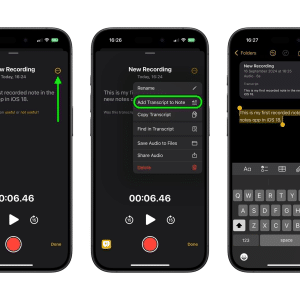A mom of three girls, Susan Powe was cleaning the kitchen one evening when she heard a text notification on her daughter’s iPhone.
It was 10 p.m., and her 13-year-old had already been asleep for an hour.
The rule in Powe’s house is that her daughter’s iPhone stays plugged in the kitchen unless it is one of the three times she is allowed to use it throughout the day. Doing this, especially at night, Powe said, “allows (her) to receive the sleep that she needs.”
New media recommendations
A new policy from the American Academy of Pediatrics is aimed at all kids, including those who use smartphones, computers and other Internet-connected devices. It expands the academy’s longstanding recommendations on banning televisions from children’s and teens’ bedrooms and limiting entertainment screen time to no more than two hours daily.
Under the new policy, those two hours include using the Internet for entertainment, including Facebook, Twitter, TV and movies. Online homework is an exception.
A pediatricians group says parents need to know that unrestricted media use can have serious consequences. That it has been linked with violence, cyberbullying, school woes, obesity, lack of sleep and a host of other problems. It’s not a major cause of these troubles, but “many parents are clueless” about the profound impact media exposure can have on their children, said Victor Strasburger, lead author of the new American Academy of Pediatrics policy.
Philip Hannam of Montgomery is a single father with three middle school-aged children. None of them, he said, have cellphones, and there are no screens in their bedrooms. The children have Nook readers, he said, and there is one desktop family computer in the kitchen area with Internet they use with permission. The family has one small flat-screen television in the living room with no cable or satellite — they use the Roku device to access Netflix and other content available online.
“I have been amazed as a parent as to how much time I have to spend protecting my children from a profoundly intrusive culture,” Hannam said. “And I am not talking about isolating them nor just keeping out pornography or violence. The culture has no sense of boundaries. It seems like it does with better rules about things like bullying or hateful language. But even these displays of extreme rule-making exist because of the void in basic human decency.”
Other than sedentary activity that would be correlated with screen time, the policy also is trying to limit children’s exposure to media advertisements for different types of less nutritious foods such as “junk food,” said Sheena Gregg, president of the Alabama Obesity Task Force and assistant director of the department of health promotion and wellness at the University of Alabama.
What Gregg finds with the college population is if they do not have behaviors instilled in them from their childhood, they won’t have it when they leave the house for college. It is important to instill habits into teens now, she said.
The policy statement cites a 2010 report that found U.S. children ages 8 to 18 spend an average of more than seven hours daily using some kind of entertainment media. Many kids now watch TV online and many send text messages from their bedrooms after “lights out,” including sexually explicit images by cellphone or Internet, yet few parents set rules about media use, the policy says.
The policy notes that three-quarters of kids ages 12 to 17 own cellphones; nearly all teens send text messages, and many younger kids have phones giving them online access.
Powe’s daughters are 15, 13 and 10, and only the 13-year-old has expressed interest in social devices. The 13-year-old’s iPhone, her mother notes, is not set up for her daughter to make calls.
“None of them have a phone,” Powe said. “We do have an emergency (cell) phone, a cheap one, if they stay the night somewhere. (The 13-year-old) has an iPod that has Wifi and texting. She loves that stuff, and we have a lot of different rules in our house. … We’re very conservative. I don’t like to say ‘no’ to her unless we have a good reason.
“She’s allowed to use (the iPhone) for 20 minutes, three times a day. The only reason she got it was because it was going to be very strict.”
Learning to communicate
Like a lot of things, behaviors start at home and with parents being able to effectively communicate what their expectations are in regard to limitation of cellphone usage and other forms of communications through social media, said Walter White, executive director of the Family Guidance Center of Alabama.
“Too often, this communicating takes the place of children learning how to communicate face-to-face,” he said. “Those skills are not being developed with children, and that’s going to lead to other problems as they grow older. That’s a major concern that I have in regard to (whether) those skills are not developed at an early age, then it becomes a lot more difficult as those children enter adulthood.”
Not just that, but Powe feels children need time when they don’t have that social pressure on them to stay connected all of the time.
“My other big thing is if you’re always connected and in front of electronics, you don’t have time to sit and think,” she said. “To pray. I just feel their whole world is so busy all the time. … I just feel that is so important.”
White said a healthy expectation is that when communication turns negative, it should never be done electronically.
“If you feel something you have to express is negative, that should always be done verbally,” he said. “And when you have that expectation, it’s going to force you to problem-solve that expectation a lot more. If you’re just going to depend on electronic means to communicate, whether that is bullying, or expressing anger, it is so easy to hit the ‘send’ button.”
And that does not require teens to communicate and problem-solve in healthy ways. Violence, White said, happens because too often things that are sent electronically are acted upon the following day or days in negative ways.
“Things that are said electronically do not have all of the nuances that face-to-face communication or other types of verbal communication do — where you can hear the tone of voice and how things are communicated,” he said. “It leads to misunderstanding, anger and violence.”
Pitfalls of social media
Powe said her 15-year-old senses this.
“She sees everything that goes along with it,” she said. “She has seen the pitfalls of being connected to things. She has a lot of wisdom for a 15-year-old. She has a Facebook account, so she keeps track of things there. We keep the computer in the dining room because I feel that’s good accountability for everybody.”
And the 13-year-old, she added, has an older laptop in her room that does not have Internet connection, and that she just uses to type in journal entries.
While Hannam strongly believes that technological devices are “wonderful instruments” that could be used for positive purposes, he said they carry severe dangers that parents are obligated to mitigate.
“And more importantly, they have the power to alter society,” he said. “They will alter how we think and perceive ourselves. They will alter our relationships and how we interface with the world. They will give us great power and make us extremely vulnerable. We have only seen the tip of the iceberg, and any parent who sees this will equip their children to use these tools for good, to restrict their impact and to not become slaves of these tools.
“When my kids start begging for more television and that they are bored without it, I know they are getting too much. Minds and bodies that are active, creative, exploring, enjoying, purposeful and learning do find great value ‘on screens,’ but are not bored when the screen is off.”
Additional Facts
13 tips to monitoring kids’ social media
? 1. No underage Facebooking
? 2. Check privacy settings
? 3. Use filtering software
? 4. Create ground rules
? 5. Get to know your child’s habits
? 6. Keep the computer in a central location
? 7. Urge kids to avoid questionnaires, free giveaways and contests
? 8. Monitor the pictures your child posts online
? 9. Set the example of how to use social media
? 10. Limit cellphone usage
? 11. Teach kids about an online reputation
? 12. Talk to kids about online dangers
? 13. Get to know the technology
www.parenting.com/Montgomery Advertiser (AL)
(c)2013 the Montgomery Advertiser (Montgomery, Ala.)










